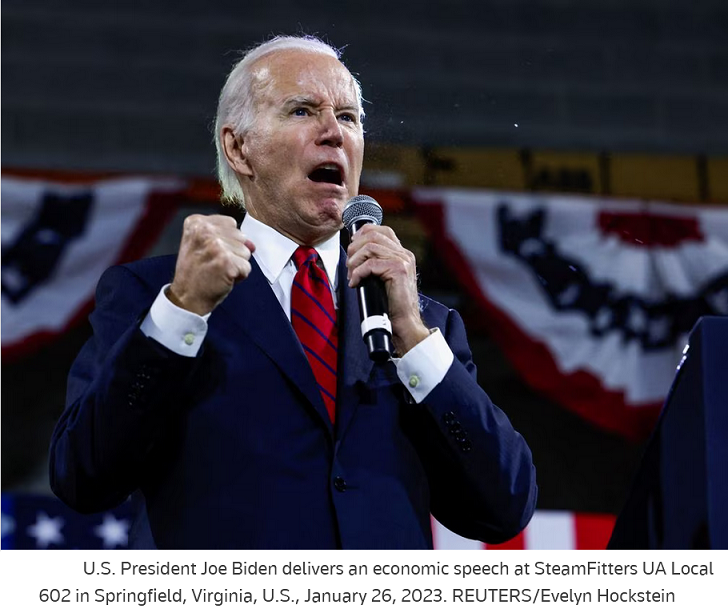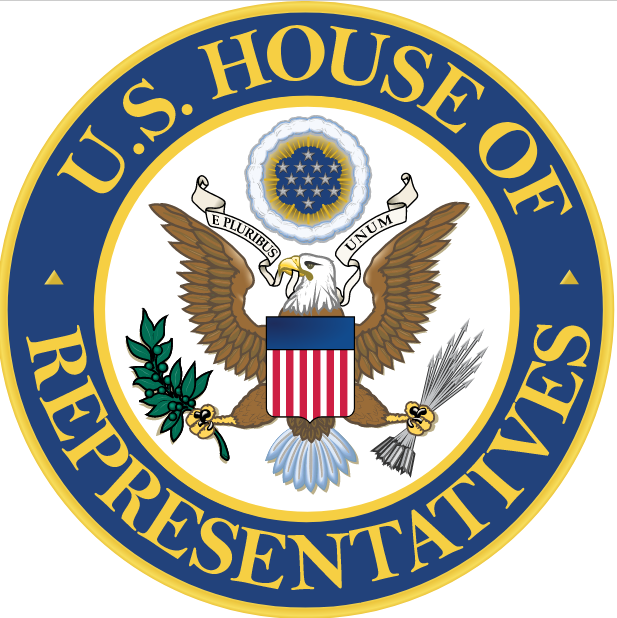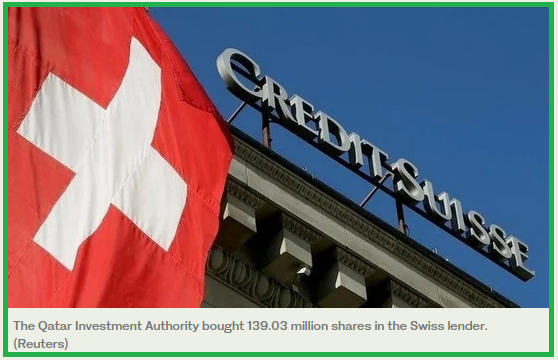Giuseppe Sandro Mela.
2023-01-30.

Ogniqualvolta l’ideologia si impone sulla realtà generando una burocrazia che la applica contro ogni forma di umano buon senso viene a crollare la struttura sociale, politica ed economica di quella misera nazione.
Il problema emerge come una colata lavica quando alle domande ‘cosa succede’ e ‘cosa si deve fare’ la realtà è intesa come l’ideologia vorrebbe che fosse e non per quello che è, cui consegue la messa in atto di un immane burocrazia tesa ad imporre al sistema i dettami ideologici.
Si configurano quindi situazioni simili a quelle che portarono alla implosione della Unione Sovietica.
* * * * * * *
L’unico dato obiettivo in materia è quello relativo al bilancio che intercorre tra domanda ed offerta del lavoro.
L’Italia è invece ossessionata da alcuni deliri coatti che vorrebbero imporsi al mercato.
1- Sono ossessionati dall’imporre un egual numero di femmine in ogni possibile struttura, legiferando di conseguenza.
2- Sono ossessionati dal gestire ogni aspetto pubblico in modo centralizzato, generando una burocrazia tale da far invidiare quella della Unione Sovietica.
3- Scuola ed università istituiscono corsi non secondo le richieste del mercato, bensì secondo dettame ideologico.
4- Sono avulsi dalla realtà.
* * * * * * *
Queste riportate a seguito sono alcuni dei grotteschi risultati.
«la metà dei posti di lavoro nel settore restava vuota per mancanza di professionalità disponibili»
«In Italia solo il 16,2% dei laureati in materie STEM (Science, Technology, Engineering, Mathematics) è di sesso femminile»
«gli studi universitari sono diventati costosissimi …. negli ultimi 15 anni la tassazione annua è cresciuta dell’82%.»
«Quasi introvabili poi fabbri ferrai, artigiani e operai specializzati del tessile, costruttori di utensili, fonditori, saldatori, lattonieri, calderai»
«Nei prossimi cinque anni mancheranno 250 mila figure professionali, tra le quali i medici con 19 mila in meno del fabbisogno annuo»
«In Italia, nel 2020, la quota di diplomati è pari a 62.9% (+0.7 punti rispetto al 2019), un valore decisamente inferiore a quello medio europeo (79% nell’Ue 27)»
«lo scorso anno la domanda di laureati ha superato le 780 mila unità, arrivando a rappresentare il 15.1% del totale dei contratti che le imprese intendevano stipulare»
«Le laureate in discipline scientifiche sono la metà dei maschi»
* * * * * * *
Il risultato amaro, molto amaro, consiste nel fatto che scuole ed università agiscono nella ottica di preservare ed aumentare il numero di propri dipendenti, del tutto incuranti che i corsi forniti servano o meno a qualcosa.
Siamo chiari.
L’unico criterio decente per giudicare una scuola, anche un singolo istituto, è quello di conteggiare quanti dei loro diplomati dopo due anni dal diploma abbiano trovato un dignitoso lavoro.
E che dire dei ministeriali? Invidiamo la Russia che ha collocazioni sopra il circolo polare artico e la Cina che dispone del laogai.
* * * * * * * *
«Si chiama “mismatch” la parola che l’Italia deve appuntare sul calendario, in cima alla lista delle priorità per il 2023. È uno degli incontri mancati più pericolosi di sempre: quello tra domanda e offerta di lavoro. In Italia nel 2020 la disoccupazione nella fascia d’età 18-29 anni era al 22 per cento (dati Istat 2019) ed il mismatch tra domanda e offerta di competenze informatiche era raddoppiato dal 2015 al 2020. Due anni fa, dunque, la metà dei posti di lavoro nel settore restava vuota per mancanza di professionalità disponibili »
«In Italia solo il 16,2% dei laureati in materie STEM (Science, Technology, Engineering, Mathematics) è di sesso femminile …. In Europa le donne, pur rappresentando il 52% della popolazione, ha il 15% dei lavori connessi con il settore ICT (Information and Communications Technology).»
«Unioncamere sulle “Previsioni dei fabbisogni occupazionali a medio termine (2022-26)”, ha allegato alcune tabelle che dovrebbero indirizzare i ragazzi verso i percorsi dei quali le aziende sono più affamate. Quali? Tutte le “figure tecniche”: dai manutentori termoidraulici agli ingegneri. “Sono richieste le nuove professioni dell’ambito informatico, come molto richiesti sono gli operai specializzati”. Quasi introvabili poi “fabbri ferrai, artigiani e operai specializzati del tessile, costruttori di utensili, fonditori, saldatori, lattonieri, calderai”
«Nei prossimi cinque anni, dicevamo, ne mancheranno 250 mila: medici (19 mila in meno del fabbisogno annuo), ingegneri, informatici e scienziati in genere (22 mila), economisti e statistici (17 mila)»
«I test Invalsi ci dicono che solo il 54% dei maturandi raggiunge la soglia minima di competenze in matematica. Gli istituti tecnici superiori, i cui iscritti vantano un tasso di occupazione dell’80% a un anno dal diploma, sono ancora al palo rispetto a Paesi a noi vicini, come la Germania»
«in Italia solo il 20,1% della popolazione (di 25-64 anni) possiede una laurea contro il 32,8% nell’Ue.»
«Le laureate in discipline scientifiche sono la metà dei maschi. …. Il divario di genere è molto importante, se si considera che tra i ragazzi si tratta di un laureato su tre, tra le ragazze solo una su sei»
* * * * * * *
Cresce la domanda di laureati nel 2022, ma uno su due è introvabile.
Tra i titoli di studio più difficili da reperire, i laureati in ingegneria elettronica e dell’informazione e quelli in scienze matematiche, fisiche e informatiche.
21 gennaio 2023.
AGI – Continua a crescere nel 2022 la domanda di personale laureato da parte delle imprese ma quasi in un caso su due la ricerca risulta particolarmente difficile. Come mostra il Bollettino annuale 2022 del Sistema informativo Excelsior, realizzato da Unioncamere e Anpal, lo scorso anno la domanda di laureati ha superato le 780 mila unità, arrivando a rappresentare il 15,1% del totale dei contratti che le imprese intendevano stipulare, in aumento di 1,4 punti percentuali rispetto al 2021.
Il 47% di questi profili, però, risulta difficile da trovare, richiedendo alle imprese una ricerca che può impegnare anche 4-5 mesi. La difficoltà di trovare laureati da parte delle imprese è persino superiore al già elevato dato medio riferito a tutte le entrate programmate.
A fronte di una crescita significativa delle entrate previste nel 2022 (5,2 milioni, in aumento dell’11,6% rispetto al 2021 e del 12,2% rispetto all’anno prima della pandemia), il mismatch ha superato la quota del 40% delle entrate complessive, oltre 8 punti percentuali in più rispetto allo scorso anno e 14 punti percentuali in più rispetto al 2019. In termini assoluti, questo si traduce in quasi due milioni di assunzioni nel 2022 per le quali le imprese hanno riscontrato difficoltà, circa 600mila in più rispetto all’anno scorso, ma quasi il doppio (1milione) di quanto evidenziato prima della pandemia.
“Il mancato incontro tra domanda e offerta è una delle grandi strozzature del mercato del lavoro italiano”, sottolinea il presidente di Unioncamere, Andrea Prete. “Anche per questo abbiamo lanciato nei mesi scorsi la piattaforma excelsiorienta, con l’obiettivo di aiutare gli studenti a conoscere ed orientarsi meglio nel mondo del lavoro, in modo da scegliere il percorso di studi più adeguato alle proprie attitudini e alle esigenze delle imprese”.
La domanda dei titoli di studio Lo “zoccolo duro” dell’occupazione nel settore privato è rimasto comunque quello dei diplomati: 1,5 milioni quelli ricercati durante lo scorso anno, il 29,7%, in calo di quasi 2 punti percentuali rispetto al 2021, quando la loro richiesta ha raggiunto il 32,5%. In questo caso, la difficoltà di reperimento si attesta al 40%. In leggera flessione la ricerca da parte delle imprese di diplomati Its, che nel 2022 ha sfiorato comunque le 52mila unità (1%), con una difficoltà di reperimento che supera la metà delle entrate: 56%.
Un ragionamento specifico riguarda la domanda di qualifiche professionali e di profili per i quali non è richiesto alcun titolo di studio. Sono infatti numerosi i casi in cui le imprese hanno dichiarato di ricercare profili che abbiano frequentato la sola scuola dell’obbligo, in quanto non riuscivano a trovare la qualifica professionale specifica e con un bagaglio di esperienze adeguato.
Per questa ragione, Excelsior distingue la domanda “esplicita” di qualifiche professionali (nel 2022 pari a oltre 1 milione di ingressi, il 19,4% del totale, con una difficoltà di reperimento pari al 48%) dalla domanda potenziale. Quest’ultima sfiora il milione e 900mila unità, arriva a rappresentare il 36% delle entrate programmate e registra il 43% di difficoltà di reperimento.
Analogamente, è pari al 36% la quota delle entrate esplicite programmate senza l’indicazione di un titolo di studio, ma scende al 19% nel caso in cui si consideri la domanda “potenziale” relativa alle qualifiche professionali. Tra i titoli di studio i più difficili da reperire sono stati nel 2022 i laureati in indirizzo sanitario paramedico (con una difficoltà di reperimento del 65%), i laureati in ingegneria elettronica e dell’informazione (61%) e quelli in scienze matematiche, fisiche e informatiche (60%), i diplomati in elettronica ed elettrotecnica (60%) e quelli in meccanica, meccatronica ed energia (56%), i qualificati con indirizzo elettrico (57%).
Nel 2022 l’indirizzo economico si attesta saldamente in cima alla classifica tra le lauree maggiormente ricercate dalle imprese: quasi 207mila le entrate previste lo scorso anno. Al secondo posto l’indirizzo insegnamento e formazione con 116mila ingressi previsti quindi l’indirizzo sanitario e paramedico (oltre 76mila), l’indirizzo di ingegneria civile ed architettura (57mila) e l’indirizzo di scienze matematiche, fisiche e informatiche (54mila).
Tra i diplomi, spicca quello con indirizzo amministrativo, finanza e marketing (quasi 440mila), quello in turismo, enogastronomia e ospitalità (226mila) e quello in meccanica, meccatronica, ed energia (153mila). A seguire, l’indirizzo socio-sanitario (125mila) e trasporti e logistica (108mila). Tra le qualifiche professionali, infine, ai primi posti per numero di entrate programmate nel 2022 si attesta l’indirizzo ristorazione (256mila), l’indirizzo meccanico (164mila), quello edile (77mila), quello in trasformazione agroalimentare (70mila) e quello relativo ai servizi di vendita (58mila).
* * * * * * *
Istat: in Italia solo il 20,1% di laureati contro il 32,8% Ue.
E il 62,9% di diplomati contro il 79% dell’Europa.
08 ottobre 2021.
Cresce il divario con l’Unione Europea sui livelli di istruzione: in Italia solo il 20,1% della popolazione (di 25-64 anni) possiede una laurea contro il 32,8% nell’Ue.
E’ quanto emerge dal Report Istat sui livelli di istruzione relativamente al 2020.
In Italia, nel 2020, la quota di diplomati è pari a 62,9% (+0,7 punti rispetto al 2019), un valore decisamente inferiore a quello medio europeo (79% nell’Ue27) e a quello di alcuni tra i più grandi paesi dell’Unione.
Le laureate in discipline scientifiche sono la metà dei maschi. Nel 2020, il 24,9% dei laureati (25-34enni) ha una laurea nelle aree disciplinari scientifiche e tecnologiche; le cosiddette lauree STEM (Science, Technology, Engineering and Mathematics). Il divario di genere è molto importante, se si considera che tra i ragazzi si tratta di un laureato su tre, tra le ragazze solo una su sei. La quota di laureati in discipline STEM è simile nel Centro e nel Mezzogiorno (23,7% e 23%, rispettivamente), mentre è più elevata nel Nord. E’ quanto emerge dal Report Istat sui “Livelli di istruzione”.
Anche nel 2020 si conferma il calo del livello di istruzione degli stranieri che si contrappone alla progressiva crescita di quello dei cittadini italiani. E’ quanto emerge nel Report dell’Istat sui livelli di istruzione diffuso oggi. Se nel 2008 la quota di popolazione con almeno un titolo secondario superiore era uguale per italiani e stranieri (di poco superiore al 53%), nel 2020 quella degli italiani è di 18 punti più elevata (64,8% contro 46,7%); la differenza è di 10 punti (era di soli 2 punti nel 2008) tra i laureati (21,2% contro 11,5%). Il livello di istruzione degli stranieri si differenzia molto per cittadinanza. Nella comunità più consistente in Italia, quella dei rumeni, il 61% possiede almeno il diploma e circa l’8% è laureato.
Tra le altre cittadinanze con maggiore presenza in Italia, l’ucraina ha i livelli di istruzione più elevati (il 22,5% è laureato), mentre i marocchini e i cinesi con almeno un diploma non superano uno su cinque e soltanto il 5% circa è laureato. Il gap di cittadinanza nei livelli di istruzione è ampio anche nella media Ue, seppur con sostanziali differenze tra i paesi. Tuttavia, a differenza di quanto avviene nella media Ue e nei principali paesi europei, dove il livello di istruzione degli stranieri ha registrato importanti aumenti nel corso del tempo, in Italia la quota di stranieri con almeno un titolo di studio secondario superiore, stazionaria nel periodo 2008-2014, si è successivamente molto ridotta e la quota di chi ha un titolo terziario è rimasta invariata. Ciò può trovare diverse ragioni connesse ai mutamenti nella geografia delle provenienze e delle destinazioni delle migrazioni, nelle differenti motivazioni alla migrazione e nelle politiche migratorie. Può influire certamente anche l’attrattività del paese in termini di opportunità lavorative offerte ai migranti e dunque la sua capacità di non restare, per i migranti più qualificati, solo un paese di transito migratorio.
* * * * * * *
In Italia nei prossimi cinque anni ci saranno 250mila laureati in meno.
In Europa solo la Romania ha una previsione peggiore sul numero di laureati nei prossimi anni.
02/01/2023.
Si chiama “mismatch” la parola che l’Italia deve appuntare sul calendario, in cima alla lista delle priorità per il 2023. È uno degli incontri mancati più pericolosi di sempre: quello tra domanda e offerta di lavoro. In Italia nel 2020 la disoccupazione nella fascia d’età 18-29 anni era al 22 per cento (dati Istat 2019) ed il mismatch tra domanda e offerta di competenze informatiche era raddoppiato dal 2015 al 2020. Due anni fa, dunque, la metà dei posti di lavoro nel settore restava vuota per mancanza di professionalità disponibili. Il gap tra uomini e donne c’è anche quando si parla di inclusione e cultura digitale, ma se guardiamo al mondo del lavoro è decisamente più marcato.
In Italia solo il 16,2% dei laureati in materie STEM (Science, Technology, Engineering, Mathematics) è di sesso femminile, contro il 37,3% di maschi. Il resto del mondo non se la passa meglio. In Europa le donne, pur rappresentando il 52% della popolazione, ha il 15% dei lavori connessi con il settore ICT (Information and Communications Technology). Questo spiega perché perché dall’Onu all’Unione Europea (che nel 2019 ha firmato la Women on digital Declaration) fino ai governi dei singoli Paesi, c’è un proliferare di programmi pensati per incoraggiare le ragazze ad avvicinarsi alle materie STEM. A dicembre di quest’anno, con dati sull’occupazione un po’ migliori rispetto alle previsioni sul post pandemia (il tasso di occupazione è salito al 60,2%, ovvero di 0,2 punti) secondo il bollettino del Sistema informativo Excelsior di Unioncamere e Anpal (l’Agenzia nazionale per le politiche attive del lavoro), il mismatch nel nostro Paese risultava assestato al 45,3%, contro il 37,5% di un anno fa. Significa che i datori di lavoro italiani hanno difficoltà a reperire le professioni di cui hanno bisogno quasi in un caso su due. Una débâcle che investe il sistema formativo e quello economico, travolge le aspettative delle giovani generazioni, mina la costruzione del futuro. Anche perché se è vero che il lavoro è leggermente aumentato, per i giovani la situazione rimane grigia. L’Italia è infatti il Paese europeo con il più alto numero di Neet (Not in Education, Employment or Training) di cui più della metà sono donne: 1,7 milioni su un totale di 3 milioni. Dati alla mano, l’incidenza è maggiore nel Sud Italia, dove i giovani che non studiano né lavorano sono il 39% rispetto al 23% del Centro Italia, al 20% del Nord-Ovest e al 18% del Nord-Est. I numeri peggiori si registrano in Sicilia (40,1%), Calabria (39,9%) e Campania (38,1%). Per il Centro Italia, il Lazio ha la più alta incidenza con circa il 25,1%, mentre la prima regione del Nord per incidenza dei Neet è la Liguria (21,1%), seguita da Piemonte (20,5%) e Valle d’Aosta (19,6%).
E in questo scenario, un altro dato cruciale è quello sulle Università, che si stanno svuotando sempre di più. Dopo, infatti, l’indagine condotta da Report ‘Education at a Glance 2022 che segnalava come tra il 2000 e il 2021 i livelli di istruzione in Italia siano cresciuti più lentamente della media dei paesi Ocse, l’Organizzazione per la cooperazione e lo sviluppo economico, oggi arriva anche la conferma di Unioncamere e Anpa. I dati da essa appena resi pubblici dicono che nei prossimi 5 anni al nostro Paese mancheranno 250mila laureati. Peggio di noi, in Europa, solo la Romania. Anche il Report dell’Ocse Education at a Glance 2022 – Uno sguardo sull’istruzione, ribadisce che l’Italia resta uno dei 12 paesi Ocse in cui la laurea non è ancora il titolo di studio più diffuso Forse, e lo abbiamo raccontato qualche mese fa, anche a causa del fatto che le Università pubbliche stanno aumentando le rette, mentre al contempo le borse di studio rimangono poche e altamente selettive. Secondo un report realizzato dall’Udu e presentato in Senato nel novembre scorso, negli ultimi 15 anni la tassazione annua è cresciuta dell’82%.
I laureati, paradossalmente, hanno possibilità consistentemente più elevate, rispetto ai diplomati, di trovare lavoro, così come hanno o meglio avrebbero sicuramente prospettive più soddisfacenti, ma gli studi universitari sono diventati costosissimi. E lo sono diventati in un Paese come il nostro che dovrebbe ancora poter garantire, attraverso la sanità e l’istruzione pubblica, una basi di partenza più o meno (che non viviamo a fantastilandia) paritaria per tutti. E invece buona parte degli abbandoni universitari sono determinati, appunto, dai costi insostenibili e non (o non necessariamente) da limiti di formazione. E facendo ancora un passo indietro, oggi una quota consistente e crescente dei ragazzi che frequentano i licei è tornata ad essere di figli di chi li aveva frequentati, e cioè di famiglie benestanti, o, ancora non povere. Per queste ragioni a molti non è piaciuta la lettera indirizzata a famiglie e studenti del ministro all’Istruzione e al merito Giuseppe Valditara, intervenuto sull’emergenza abbandoni. Valditara ha annunciato misure anti-dispersione: dai docenti tutor alla sperimentazione di classi da dieci studenti, dalla didattica personalizzata sino a una commissione di esperti per contrastare il bullismo. Tra le iniziative di fine anno il ministro dell’Istruzione e del Merito Giuseppe Valditara ha scritto alle famiglie degli studenti di terza media per fornire loro alcuni consigli per la scelta della scuola superiore. Avvalendosi del rapporto di Unioncamere sulle “Previsioni dei fabbisogni occupazionali a medio termine (2022-26)”, ha allegato alcune tabelle che dovrebbero indirizzare i ragazzi verso i percorsi dei quali le aziende sono più affamate. Quali? Tutte le “figure tecniche”: dai manutentori termoidraulici agli ingegneri. “Sono richieste le nuove professioni dell’ambito informatico, come molto richiesti sono gli operai specializzati”. Quasi introvabili poi “fabbri ferrai, artigiani e operai specializzati del tessile, costruttori di utensili, fonditori, saldatori, lattonieri, calderai”. E qui arrivano le proteste, perché, dice chi contesta la missiva, l’ottava economia al mondo soffre di un ritardo più grave della penuria di lattonieri: quello che manca all’Italia sono soprattutto i giovani laureati. Nei prossimi cinque anni, dicevamo, ne mancheranno 250 mila: medici (19 mila in meno del fabbisogno annuo), ingegneri, informatici e scienziati in genere (22 mila), economisti e statistici (17 mila). Perfino di laureati nelle materie umanistiche ce ne saranno meno di quelli che le aziende vorrebbero, soprattutto le industrie del tech che cercano persone “capaci di pensare fuori dagli schemi”.
Colmare questo gap dovrebbe essere lo scopo di qualsiasi buon orientamento e di una seria riforma degli istituti tecnici che permetta anche a chi non ha fatto il liceo di non mancare l’obiettivo della laurea. In un mercato del lavoro in cui le figure maggiormente richieste oggi, domani potrebbero essere già sorpassate, la scuola, più che fornire profili ultra specializzati, dovrebbe preoccuparsi di formare giovani capaci di adattarsi a scenari sempre nuovi. Il rischio altrimenti è di condannarli all’invecchiamento. Insomma, come scrive la giornalista economica Romana Liuzzo “pare esserci un’estrema solitudine in mondi che dovrebbero unirsi e invece non si parlano, o si parlano male: la scuola, l’università, il lavoro”. I percorsi formativi continuano a essere autoreferenziali, sganciati dalle esigenze del mercato e poco aggiornati rispetto alla velocità con cui procede l’innovazione tecnologica. Le Stem – le materie scientifiche, tecnologiche, ingegneristiche e matematiche – non sfondano: l’Italia conta il 6,7% di laureati, contro una media europea del 13%. I test Invalsi ci dicono che solo il 54% dei maturandi raggiunge la soglia minima di competenze in matematica. Gli istituti tecnici superiori, i cui iscritti vantano un tasso di occupazione dell’80% a un anno dal diploma, sono ancora al palo rispetto a Paesi a noi vicini, come la Germania. E la retorica su quel merito parecchio invocato dal governo di Giorgia Meloni evita, purtroppo, di guardare a quella variabile che si chiama “privilegio” che in una società capitalista ha un peso fortissimo. Il privilegio o il suo opposto disagio sociale ed economico sono il punto di partenza, e questo punto di partenza inficia in parte il concetto di meritocrazia. Andare a lavorare sul gap tra fasce sociali dovrebbe essere la priorità per far fiorire talenti e per arginare la dispersione, mettendo da parte del retoriche da american dream che funzionano nei film, ma ormai manco troppo.








